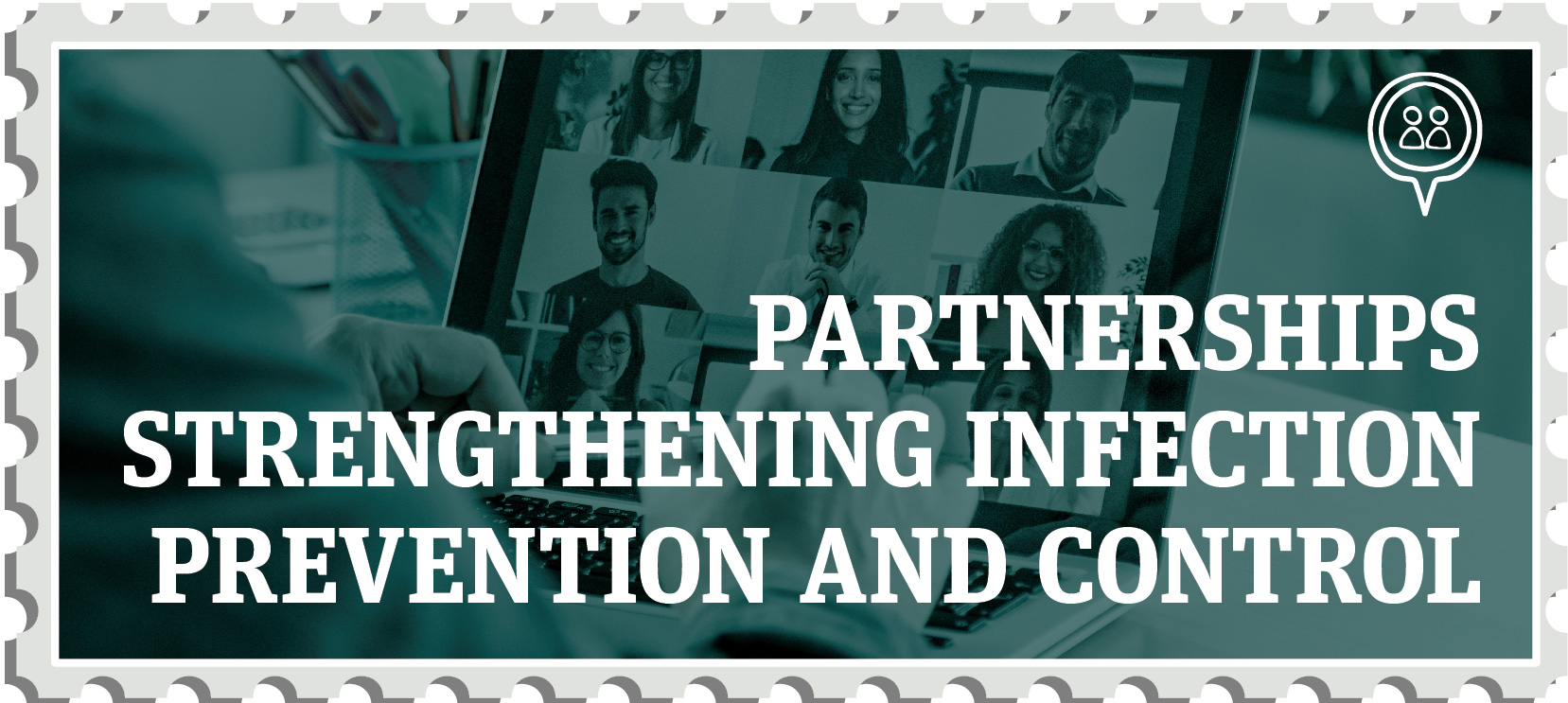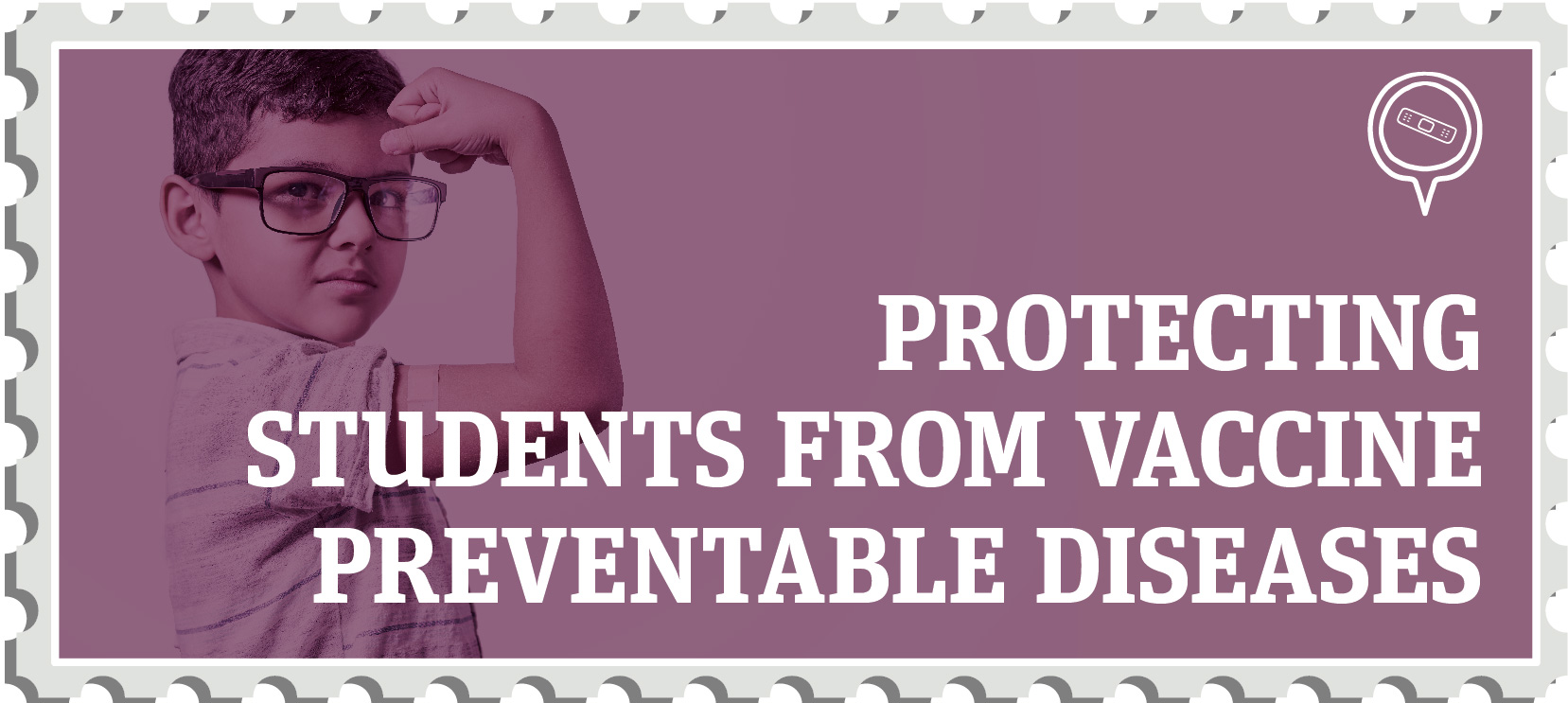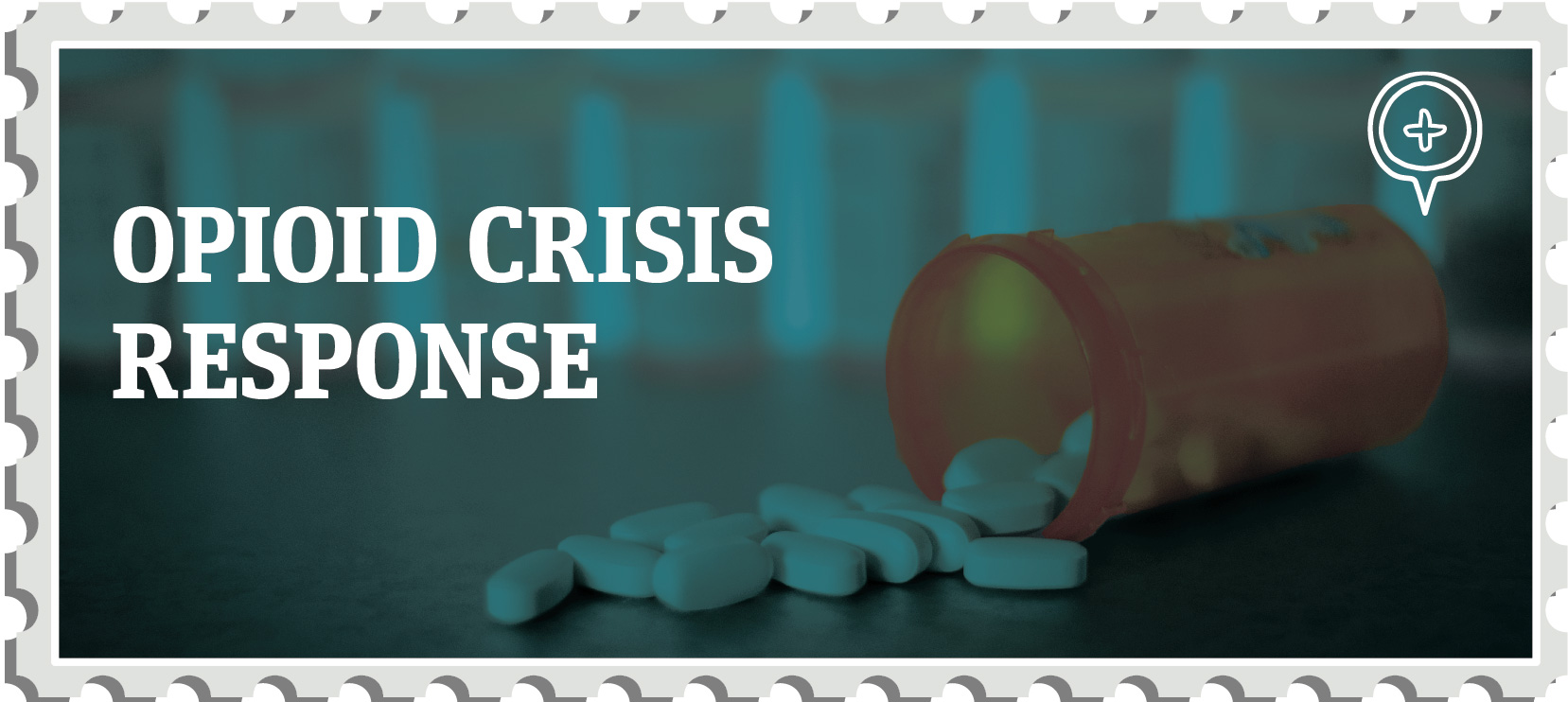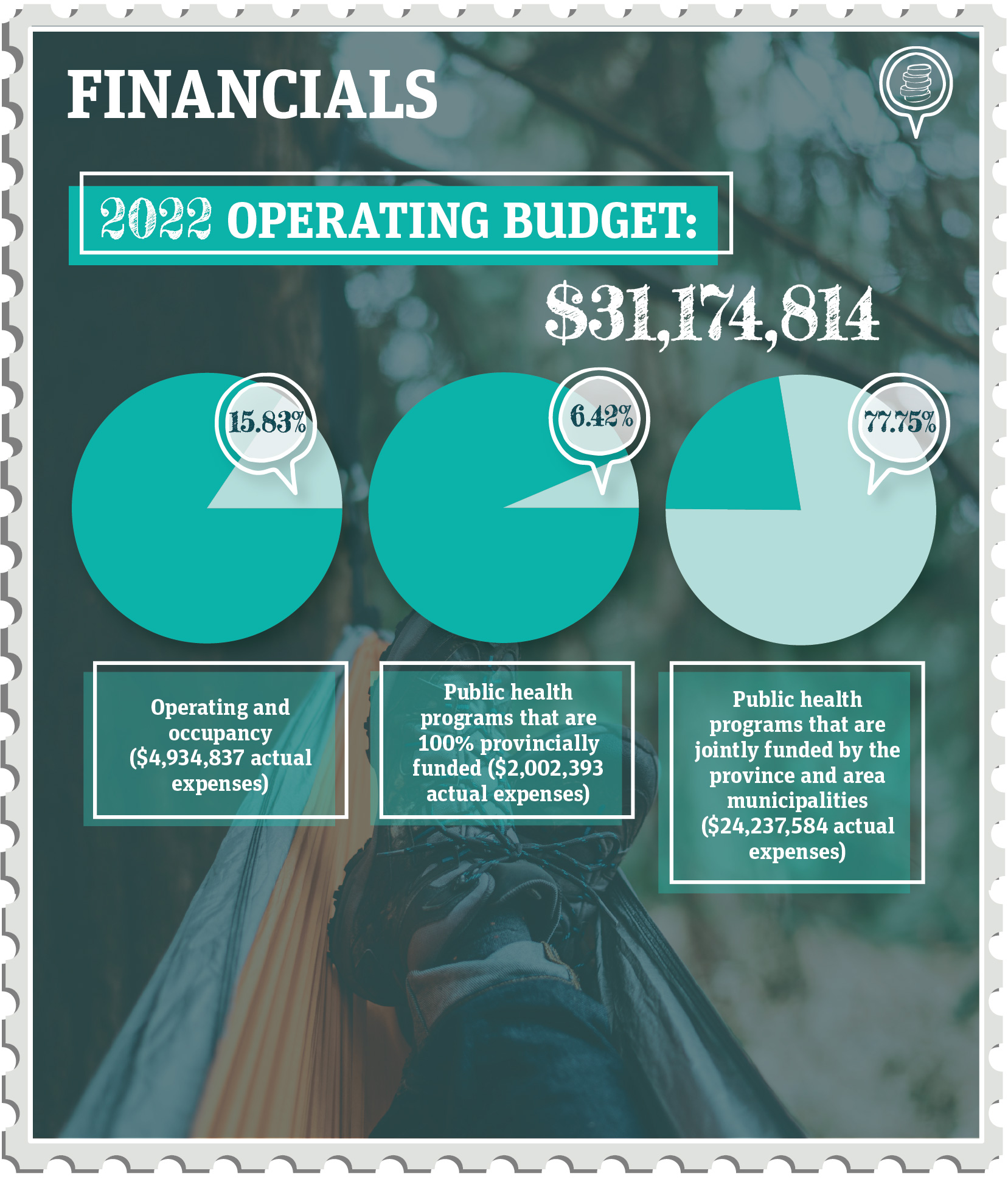Annual Report 2022

- Message from Dr. Penny Sutcliffe
- Message from René Lapierre
- Health impacts of climate change
- Partnerships strengthening infection prevention and control
- Protecting students from vaccine preventable diseases
- Targeting sexually transmitted infections
- Free dental care for seniors
- Healthy growth and development
- Opioid crisis response
- Invisible No More, 2SLGBTQ+ initiative
- COVID-19 pandemic response learnings
- Financials

Message from Dr. Penny Sutcliffe
Medical Officer of Health and Chief Executive Officer for Public Health Sudbury & Districts
As I reflect on 2022—a year of challenges and accomplishments, including COVID-19 pandemic response and recovery—the significant role of Public Health Sudbury & Districts (Public Health) in safeguarding and promoting people’s well-being is demonstrated again. With the unwavering dedication from our staff, leadership from the Board of Health, and collaboration with many partner agencies and individuals, Public Health actioned our commitment to meet local needs and build healthier, stronger communities.
2022 began with an all-hands-on-deck response to the COVID-19 Omicron wave and a substantial effort to increase COVID-19 booster dose vaccinations in our service area. Staff displayed determination and professionalism—exemplifying Public Health’s response to the ever-evolving pandemic. We also took an opportunity this year to draw on partner and staff insights about their experiences during the local COVID-19 response to understand our strengths and challenges, key lessons learned, and considerations for a future emergency response. Over the last few years, the critical nature of emergency preparedness, prevention, and investments in public health has become even more apparent.
Collaborating with partners across sectors—municipal, education, health, non-profit, and more—our staff worked on strategies to address global and nation-wide public health issues, including climate change and challenges arising from the toxic drug crisis. These comprehensive strategies sought to reduce disparities in health and enhance opportunities for all for physical, mental, and social well-being.
Throughout the year, staff delivered valuable programs and services, making progress on our recovery priorities—getting children back on track, levelling up opportunities for health, fostering mental health gains, and supporting safe spaces. Recognizing that recovery is not just about bouncing back but also about adapting and building a resilient community, our teams prioritized the health of children and families through our Healthy Babies Healthy Children program and a strong focus on our Immunization School Pupils Act (ISPA) programming.
Throughout the year, we strengthened our reputation as a trusted and relevant public institution—always working in the best interests of the community’s health. Whether it was promoting healthy behaviours, providing essential services like vaccination and seniors dental care, or emphasizing health equity through initiatives like Invisible No More, we played a vital role in creating healthier communities in 2022!
It is my pleasure to present Public Health Sudbury & Districts’ 2022 Annual Report: Achieving Healthier Communities for All.
Message from René Lapierre
Chair, Board of Health for Public Health Sudbury & Districts
In the past year, Public Health saw its share of challenges and successes, and I am once again reminded of the essential function we serve in protecting and promoting the health of our communities. Guided by Dr. Penny Sutcliffe’s compassionate leadership, the professionalism of staff, and collaboration with our incredible partners from all sectors at all levels, we remain committed to providing relevant and quality services throughout our catchment area.
With the support and trust of our community, we are navigating the complex public health issues of the day. In 2022, we intensified our response to the escalating toxic drug crisis—a multifaceted epidemic with devastating consequences. Public Health and community drug strategies deployed comprehensive tactics, focusing on harm reduction, access to treatment, and community education to prevent overdose deaths. The scale and complexity of these challenges further reinforced our responsibility to offer programs and services and make decisions that aim to achieve healthier communities for all—a responsibility that is not taken lightly.
In 2022, staff demonstrated their expertise on many fronts as we responded to emerging threats like planning and preparation for the spread of MPOX in Ontario, while delivering essential health protection programming, such as food safety and outbreak management. As well, we prioritized recovery activities and worked to reduce the growing backlog of services caused by our ongoing COVID-19 response. We worked to be better positioned to address the emerging and unique health needs of our communities.
Wise investments in public health and the continued support and trust of our community mean we can continue to be a valuable and trusted source of health information and health programs and services. This helps us meet our mission of promoting and protecting health and preventing disease for everyone! As Board Chair, it continues to be my honour to serve, and it is a great honour to present the Public Health Sudbury & Districts’ 2022 Annual Report: Achieving Healthier Communities for All.
Health impacts of climate change
Climate change impacts human health in many ways—through wildfires; extreme weather-related events such as heatwaves, floods, storms, and freezing rain; and by facilitating the spread of vector-borne diseases, which are illnesses transmitted by living organisms like mosquitoes (malaria) or ticks (Lyme disease). Though we all see and are affected by the impacts of climate change, we are not all affected equally.
By expanding our understanding of the causes of climate change and its impacts, we are better able to advocate for healthy policies and initiatives in our community and beyond. In 2022, Public Health sought to address the health impacts of climate change, particularly for populations at greatest risk, such as seniors, youth and children, Indigenous peoples, racialized populations, residents of northern and remote communities, and individuals who are socially and economically disadvantaged.
Throughout the year, we issued advisories when the weather placed public health and safety at risk. Wildfire smoke alerts provided actions and recommendations for the public to protect themselves. Staff also worked on programs and initiatives to create awareness of the impacts of climate change and produced a climate change report to help municipalities and interested parties assess risks and engage in climate change adaptation planning.
The actions organizations and individuals take now contribute to the safety and well-being of people today and that of generations to come, ensuring healthier communities for all.

Partnerships strengthening infection prevention and control
We have always known the importance implementing effective infection control measures to prevent the spread of disease and keep people healthy. Public Health has established meaningful relationships that allow us to collectively protect vulnerable populations from outbreaks due to respiratory or enteric illness and promote health locally.
For example, the Infection Prevention and Control (IPAC) Hub, for which we are the lead agency, hosted virtual and in-person education sessions for administrators and managers in congregate living settings such as long-term care and retirement homes. This was part of a training series to assess the settings’ preparedness and increase their knowledge and skills to prevent and respond to outbreaks. A total of 380 attendees from across Northern Ontario participated, with presentations provided by Public Health Sudbury & Districts, Public Health Ontario, Algoma Public Health, and the Timiskaming Health Unit. The engagement of participants and partner agencies underscored the value and importance of working together to address the unique needs of congregate living settings in controlling outbreaks and preventing the spread of disease.

Protecting students from vaccine preventable diseases
Throughout the school year, Public Health staff worked hard to ensure children were caught up on their routine immunizations, in line with the Immunization School Pupils Act (ISPA). The COVID-19 pandemic caused delays in routine immunizations and staff—in cooperation with local school boards and parents and guardians—facilitated many vaccination opportunities to get children up to date. Routine immunizations protected students from junior kindergarten to Grade 8 against diseases such as measles, mumps, rubella, pertussis (whooping cough), and many others.
In Ontario, parents and guardians report immunizations for their school-aged children to a public health unit to ensure healthier communities and a safe learning environment for the school year. Our team worked to let parents know about the status of children’s immunizations and were here to answer any questions and help get kids caught up.

Targeting sexually transmitted infections
As sexually transmitted infection (STI) rates increased—for example, the Sudbury and Manitoulin districts, along with the rest of Canada, witnessed a rise in infectious syphilis and gonorrhea cases in 2022—Public Health swiftly responded to the challenge, emphasizing the significance of safe sex practices through our programs and services. Our Sexual Health Clinic played a crucial role, offering free and confidential testing and counselling services to the community.
Staff encouraged testing, offered counselling, and promoted follow-ups with health care providers for those at risk, helping individuals to take proactive steps in protecting their health. Staff sought to empower the community with the knowledge and resources to make informed decisions about their sexual health. By prioritizing preventive measures and advocating for safe sex practices, we aimed to prevent STIs and chronic diseases they cause, thus improving the overall well-being of our communities.
Furthermore, our commitment to providing free and accessible services ensured that everyone, regardless of their socioeconomic status, were able to access essential sexual health services. By focusing on health equity and inclusivity, Public Health bridged gaps in health care to help people live healthy lives.

Free dental care for seniors
The Ontario Seniors Dental Care Program (OSDCP) provides free, routine dental care for low-income seniors. Services are delivered by public health units, Community Health Centres, Aboriginal Health Access Centres, and some contracted private dental providers, where residents who are 65 years of age or older who do not have dental benefits can apply, with eligibility based on income.
Public Health leads the local OSDCP implementation. 2022 saw the completion of a capital project to build the new Seniors Dental Care Clinic at our Elm Place site in Sudbury; the delivery of preventive, diagnostic, and restorative dental services at the new clinic; referrals for OSDCP clients to one of our contracted dentists or denturists for emergency, restorative, or prosthodontic services; and enrolment support in person and over the telephone, such as assisting seniors with completing application forms. To increase access to services, staff also provided support with transportation, when necessary, such as referrals to Ontario’s Northern Health Travel Grant.
Local enrolment and use of OSDCP services has steadily increased since the program was launched in November 2019. By the end of 2022, a total of 754 seniors in our catchment area had enrolled and 638 seniors had received at least one dental service.
Additional plans for the program include recruiting more dental providers to deliver OSDCP services in district areas, recruiting dental specialists, and exploring options for providing dental care to enrolled seniors residing in long-term care facilities.

Healthy growth and development
Our Healthy Babies Healthy Children Program (HBHC) is a home visiting program for pregnant people and parents of children under 6 years of age who may need more support. Public health nurses and family home visitors completed more than 3000 home visits with over 200 client families across our service area to provide parents with advice and support about pregnancy and parenting. Staff provided education on infant feeding, how to care for a newborn, positive parenting, injury prevention, and the importance of self-care. When further support was needed, staff made referrals to the appropriate community partners. What’s more, staff on the HBHC team were active in their role as liaison with Health Sciences North (HSN) and Manitoulin Health Centre (MHC). They completed daily assessments with new parents on the labour and delivery floor at HSN and provided resources and education to staff at HSN and MHC, as appropriate. Our team remains dedicated to the healthy growth and development of children across our communities to ensure healthy kids thrive in the Sudbury and Manitoulin districts.

Opioid crisis response
Public Health continued to respond to the toxic drug crisis in conjunction with our community partners throughout 2022. In May, Health Canada granted a federal exemption under the Controlled Drugs and Substances Act to open a new supervised consumption site (SCS) in Greater Sudbury, which is operated by Réseau ACCESS Network. The site opened its doors in September and provides education, sterile equipment, supervised consumption services, social service referrals, and most importantly, rapid response in the event of an overdose to those who access the service.
Naloxone use was promoted through a campaign designed to increase awareness and knowledge about the signs of overdose; what naloxone is; where to find it; why you should carry it, and how it is administered. Staff offered training on how to deliver naloxone and new organizations were recruited to assist with distribution of naloxone. Through the harm reduction expansion project, 16 new needle and syringe disposal kiosks were provided to communities across the service area to promote safe needle disposal.
To help the public understand the ongoing crisis, we continued to post data on our website, tracking emergency medical services (EMS) calls and emergency department visits for suspected opioid-related incidents, as well as opioid-related overdose deaths and naloxone distribution. Partners also continued to relay up-to-date information about what they are experiencing within their organizations, allowing our agency to release timely drug warnings to alert the public and other partners about increased risk.
We relied on our collaborative partnerships with various sectors to actively address the challenges arising from the toxic drug crisis. Working together, especially with those who are most affected, we seek to be part of the solution in reversing the trends of harm due to substance use. By actively involving individuals who have lived or are currently living through these experiences, we ensured that our efforts are guided by their expertise and insights to contribute to solutions.

Invisible No More, 2SLGBTQ+ initiative
In late 2022, staff published the findings of a research project called “Invisible No More: Voices of the Queer Community.” The project was carried out in collaboration with the School of Social Work at Laurentian University. The research aimed to understand the experiences of 2SLGBTQ+ individuals in Northern Ontario throughout their lives and explore the social and cultural challenges faced by the community. The goal was to fill the gaps in existing research and provide valuable insights to inform public health policies and practices that would better support the health and well-being of 2SLGBTQ+ community members, allowing them to reach their full health potential.
The project used digital storytelling as a method to explore the health-related concerns of 2SLGBTQ+ participants. A total of 13 digital stories were created and shed light on the unique experiences, struggles, and triumphs of individuals within the 2SLGBTQ+ community. We hosted a launch event to showcase the digital stories, which became a powerful tool in identifying opportunities for agencies and organizations to improve their work to support those in need.
The research identified a significant need to amplify the voices and experiences of 2SLGBTQ+ individuals in our Northern communities. The action growing from this research would see us working to combat stigma, promote inclusion, and enhance safety for the Queer population. This is a crucial step in achieving a more accepting and understanding society.

COVID-19 pandemic response learnings
The COVID-19 pandemic further reinforced the truism that emergency preparedness is not an option but a necessity. Through the summer and fall of 2022, Public Health proactively gathered feedback from community partners and staff involved in the local COVID-19 response—through online surveys and facilitated debrief sessions—encouraging reflection on strengths, challenges, silver linings, and key lessons learned during the pandemic. Valuable insights were identified from these discussions and were used to inform ongoing COVID-19 response and to shape the agency’s approach to future public health emergencies.
An evidence-informed approach will ensure that the agency is better equipped to handle challenges, make informed decisions, and foster stronger collaborations in times of crisis. We understand that collective action, collaboration, and partnerships were instrumental in weathering the storm of the COVID-19 pandemic. By learning from the experiences shared by community partners and staff, the agency has been able to identify areas for improvement and build upon its strengths and actions that worked well. This collaborative approach to learning and growing ensures that the agency remains prepared for future public health emergencies, safeguarding the health and well-being of the communities we serve.

Financials
2022 operating budget: $31,174,814
- 15.83% operating and occupancy ($4,934,837 actual expenses)
- 6.42% public health programs that are 100% provincially funded ($2,002,393 actual expenses)
- 77.75% public health programs jointly funded by the province and area municipalities ($24,237,584 actual expenses)
This item was last modified on April 17, 2025


